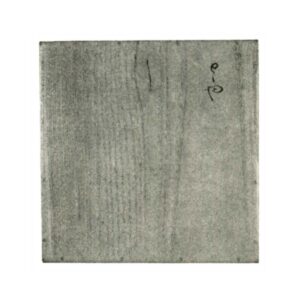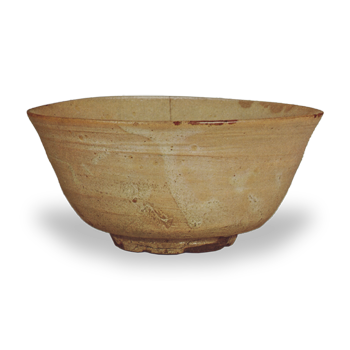


Major Artifact
Accessories
Inner box: Paulownia wood, white lacquer, inscription by Kobori Enshu
Provenance
Sen no Rikyu – Furuta Oribe – Kobori Enshu – Kobori family – Watanabe Ki (early Meiji period) – Fujita family (February 1904)
Recorded
Famous Artifacts Record, Collection of Famous Artifacts Throughout the Ages, Collection of Famous Tea Bowls, Record of Ancient Famous Artifacts, Kobori Family Tools Catalog, Snow Interval Grass Tea Ceremony Insights by Kanji-an, Casual Notes from a Leisurely Residence, Enshu’s Hundred Gatherings Record, Tokyo Tea Ceremony Record Volume 4 Part 2, Taisho Era Famous Artifacts Guide
Dimensions
Height: 6.0–6.6 cm Diameter: 14.0–14.3 cm Foot diameter: 5.6 cm Height: 0.8 cm
Owner: Fujita Museum of Art, Osaka
This tea bowl was owned by a fishmonger in Sakai and was named “Tottaya” after him. It was passed down to Rikyu, who treasured it, and is therefore known as “Rikyu Tottaya.” Although it is the oldest known Tōdōya tea bowl, its style differs from the commonly known Hon-te Tōdōya or Hira-Tōdōya, and it is distinguished as “Koto Tōdōya.” It has a thin, subdued form, with a pale brown body covered by a thin, translucent glaze. The surface has a pale persimmon color, and the front features white glaze irregularities and drips, giving it an overall unfinished appearance.
The foot is made of exposed clay, thin on one side, with a gently rounded interior and side grooves forming a bamboo joint-like foot. The rim is wide and open, with four eyes. This is a type of ancient Korean ware, possessing the quiet, unadorned elegance that would have appealed to Rikyu, and is a renowned bowl with profound emotional depth.



